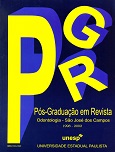Condicionamento ácido em diferentes regiões do esmalte de molares decíduos
DOI:
https://doi.org/10.14295/bds.2001.v4i1.103Abstract
O objetivo deste estudo in vitro foi de avaliar ao microscópio eletrônico de varredura, a micromorfologia do esmalte de dentes decíduos após condicionamento com ácido fosfórico a 35%, com tempos de aplicação de 15, 30 ou 45 segundos, sobre a superfície vestibular ou oclusal de molares decíduos. Foram selecionados 24 molares decíduos, clinicamente hígidos, esfoliados naturalmente, que foram armazenados em solução fisiológica à temperatura ambiente. As amostras sofreram limpeza coronária com pasta de pedra pomes e água em baixa velocidade e foram divididas aleatoriamente em 6 grupos experimentais, com 4 dentes em cada grupo. As amostras dos grupos 1 a 3 receberam condicionamento ácido na superfície vestibular e as amostras dos grupos 4 a 6 na superfície oclusal. Nos G1 e G4, o condicionamento foi realizado durante 15 segundos, nos G2 e G5 durante 30 s e nos G3 e G6 durante 45 s. Após, todos os espécimes foram lavados com spray de ar- água durante 15 s. Foram desidratados, montados em bases metálicas, cobertos com ouro e examinados em um microscópio eletrônico de varredura ( Jeol, JSM – 6100). A análise das fotomicrografias revelou que as amostras dos grupos 1, 2 , 5 e 6 apresentaram predominância do padrão tipo I, enquanto nos grupos 3 e 4 observou-se uma predominância do padrão tipo II. Em todos os grupos, quanto maior o tempo de aplicação do agente condicionador, os variados padrões de condicionamento mostram-se mais evidentes.
Downloads
Downloads
Published
How to Cite
Issue
Section
License
Brazilian Dental Science uses the Creative Commons (CC-BY 4.0) license, thus preserving the integrity of articles in an open access environment. The journal allows the author to retain publishing rights without restrictions.
=================




























